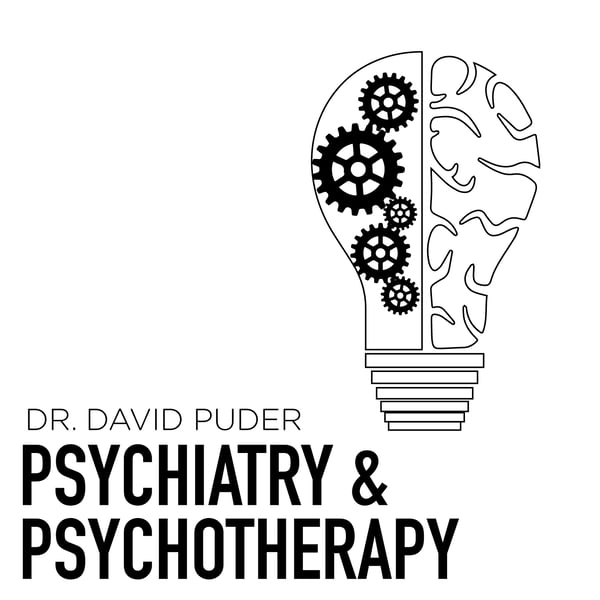How to Treat Emotional Trauma
Psychiatry & Psychotherapy Podcast
David J Puder
4.8 • 1.3K Ratings
🗓️ 23 August 2018
⏱️ 70 minutes
🧾️ Download transcript
Summary
What is trauma?
Emotional trauma comes from stress that is overwhelms a person’s neurological system. Some stress can be good and formative, or it can be bad and get stuck in the brain, causing someone deep emotional pain.
Think of climbing Mount Everest. Some people choose to do that, and it’s easily one of the most stressful situations you can put yourself in on purpose. That’s good stress if you have trained for years and are ready for it. If someone forced you to climb Mount Everest, it would register in the brain as a trauma.
Trauma is too big for the mind, brain, and nervous system to assimilate. It’s a memory, or experience, that gets stuck because the person believed it would result in their death, or at least serious injury.
The brain has several mechanisms to keep something stuck so that the person will remember it, and try to avoid getting hurt in the same way in the future. It is a survival instinct.
People commonly demonstrate symptoms of trauma when they’ve:
Experienced a sexual violation
Seen violence
Experienced violence or abuse
Been neglected—experienced the absence of something that they should have had.
Been in near death experiences like car accidents or war
People who have PTSD, or post traumatic stress disorder, have experienced a soul-level of brokenness, and even talking about the event, or having a memory of it, can bring it back with the same force that occured in the actual accident. They often have recurring nightmares, or repetitive symptoms that continue long after the event.
Typical PTSD symptoms alternate between chronic shut down and fight and flight
Fight and flight symptoms are:
Sweating, nightmares, flashbacks, anger, rage, panic, hypervigilance, tense muscles, painful knotted gut
Shut down symptoms are:
Dissociation, freezing, emotional detachment, voice trembling, difficulty getting words out, numbness, apathy, fear, helplessness, dizzy, empty, nausea
Moments in connection mode look like:
curiosity, exploration, relaxed and full breathing, feeling grounded, true smiles
To read more about trauma, go to the full blog on this episode here.
Join and discuss this episode with David on Instagram: dr.davidpuder
Twitter: @DavidPuder
Facebook: DrDavidPuder
Transcript
Click on a timestamp to play from that location
| 0:00.0 | Welcome to the Psychiatry and Psychotherapy Podcast. The podcast to help you in your journey |
| 0:06.4 | towards becoming a wise, empathic, genuine, and connected mental health professional. |
| 0:11.6 | I'm your host, Dr. David Peter, a psychiatrist who splits his time practicing psychopharmacology, |
| 0:17.1 | individual and group psychotherapy, medical director of a day treatment program, |
| 0:21.2 | medical education research, and teaching, residence, and medical students. |
| 0:30.0 | Okay, so today I'm here with Randy Stanette. He is a side PhD level clinical psychologist, |
| 0:43.8 | and he oversees a bunch of trainees in clinical psychology. What are you doing right now at the |
| 0:50.8 | SAC Norden Center? Sure, so I'm one of the co-managers of the behavioral health department, |
| 0:55.7 | so overseeing our behavioral health clinicians' activities and our psychiatry residents, |
| 1:01.3 | and just keeping a lot of that stuff going over at the SAC health system. |
| 1:06.4 | So this is an FQHC, which is basically kind of a high risk, |
| 1:13.0 | indigent population, people who don't have insurance. The government provides |
| 1:18.1 | wraparound dollars to Medicare, Medi-Cal, which allows these patients to be seen. |
| 1:26.4 | So, you know, lots of trauma. A lot of trauma. A lot of trauma. You just want to expect that |
| 1:32.6 | trauma will be there in front of you in some form or fashion. So today we are going to be going through |
| 1:40.8 | talking about PTSD, talking about trauma, the results of trauma. |
| 1:44.5 | Dr. Stanette has a lot of experience. We have a couple of patients together who have been through |
| 1:52.4 | quite a bit of trauma, and so we've collaborated and I'm really excited to have you on. |
| 1:59.6 | Thank you. It's my pleasure. Thanks for the invitation. |
| 2:01.8 | And I actually had them on earlier. We were just talking about sort of the path to become a therapist |
| 2:08.5 | earlier on in the podcast, and so this is our second episode together. |
| 2:12.8 | So today we're really going to go into talking about trauma, some of the DSM criteria. |
... |
Please login to see the full transcript.
Disclaimer: The podcast and artwork embedded on this page are from David J Puder, and are the property of its owner and not affiliated with or endorsed by Tapesearch.
Generated transcripts are the property of David J Puder and are distributed freely under the Fair Use doctrine. Transcripts generated by Tapesearch are not guaranteed to be accurate.
Copyright © Tapesearch 2025.

